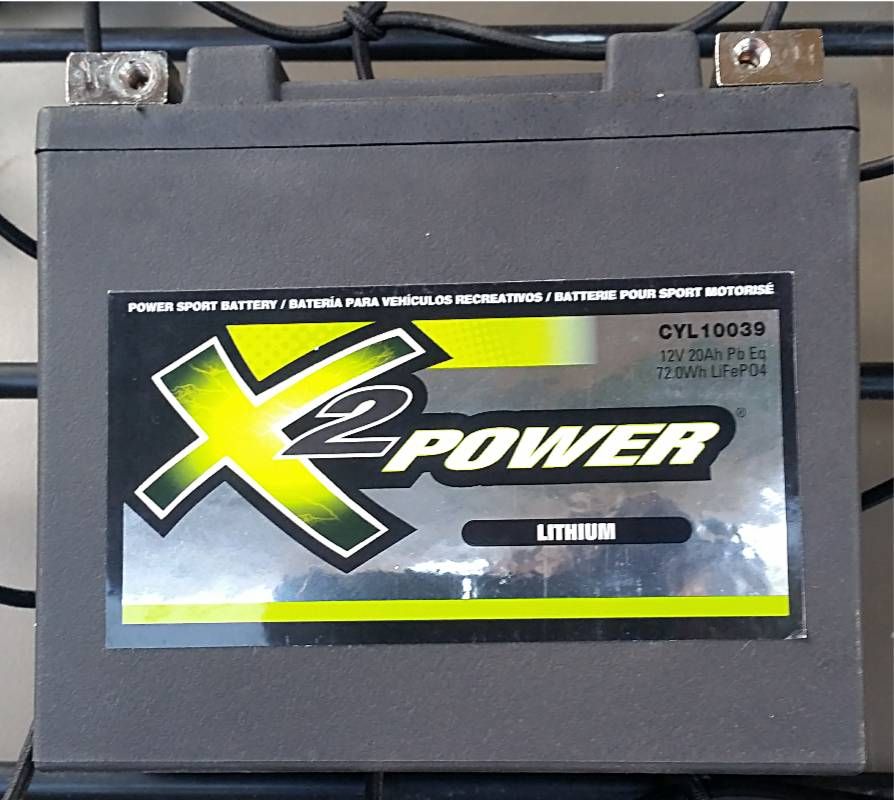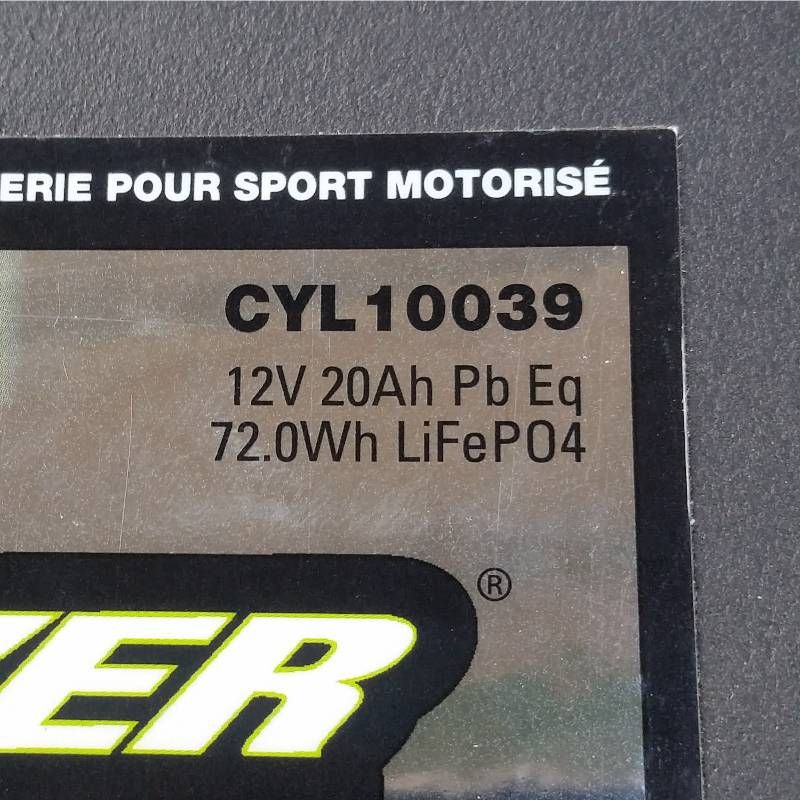Hi folks,
I've been using a LiFePO4 battery for several months to run the starter and electrics on my motorcycle. Although its been working as advertised, I find it much too picky for that job and will be changing back to a traditional SLA. Now I'm looking for an alternative use for this battery. If I could solar charge it, I think it would make a great off-grid camping battery to run a couple LED lights and a fan.
Now, I'm a newb at electronics and could use some advice on how to set this up. Here's what I know about this battery:

Its an X2 Power CYL10039 from Batteries Plus Bulbs

The sticker claims 12v 20Ah Pb Eq, 72.0Wh LiFePO4

The label on the back gives a maximum charge current of 6.6A, and a Min/Max charge voltage of 14.6/15V.
I've been using a Battery Tender specific for LiFePO4 batteries and it charges up to about 14.5V. After sitting overnight the resting voltage seems to be about 13.3v. As long as the temperature is above 40F it seems to happily put out the 270 crank-amps my bike needs to start. Though that won't matter once I change it out.
Unfortunately, I don't know what kind of cells are in this battery, or how many, or in what configuration. Here is my best guess without tearing the thing open. A fully charged bank of cells in series would be around 4.4v, yes? so mine sitting at 13.3v should have 3 banks in parallel. Doesn't tell me how many cells per bank, but from what I've read, a lot of Lithium chargers are set up to charge 3 banks. If this is true, I need a controller that will allow up to 6.6A to charge the battery. Does it matter how much capacity the battery has? A larger capacity would just take longer, right? The controllers I've seen so far are either 3A or 10A. I haven't even looked at solar panels yet.
So the questions I have at the moment are:
- Do I know enough about this battery to pick out a compatible solar controller?
- Do you all have any recommendations as to where to get a controller and what kind or brand?
- Are my assumptions above anywhere near correct?
Thanks everyone for your time and responses.
I've been using a LiFePO4 battery for several months to run the starter and electrics on my motorcycle. Although its been working as advertised, I find it much too picky for that job and will be changing back to a traditional SLA. Now I'm looking for an alternative use for this battery. If I could solar charge it, I think it would make a great off-grid camping battery to run a couple LED lights and a fan.
Now, I'm a newb at electronics and could use some advice on how to set this up. Here's what I know about this battery:

Its an X2 Power CYL10039 from Batteries Plus Bulbs

The sticker claims 12v 20Ah Pb Eq, 72.0Wh LiFePO4

The label on the back gives a maximum charge current of 6.6A, and a Min/Max charge voltage of 14.6/15V.
I've been using a Battery Tender specific for LiFePO4 batteries and it charges up to about 14.5V. After sitting overnight the resting voltage seems to be about 13.3v. As long as the temperature is above 40F it seems to happily put out the 270 crank-amps my bike needs to start. Though that won't matter once I change it out.
Unfortunately, I don't know what kind of cells are in this battery, or how many, or in what configuration. Here is my best guess without tearing the thing open. A fully charged bank of cells in series would be around 4.4v, yes? so mine sitting at 13.3v should have 3 banks in parallel. Doesn't tell me how many cells per bank, but from what I've read, a lot of Lithium chargers are set up to charge 3 banks. If this is true, I need a controller that will allow up to 6.6A to charge the battery. Does it matter how much capacity the battery has? A larger capacity would just take longer, right? The controllers I've seen so far are either 3A or 10A. I haven't even looked at solar panels yet.
So the questions I have at the moment are:
- Do I know enough about this battery to pick out a compatible solar controller?
- Do you all have any recommendations as to where to get a controller and what kind or brand?
- Are my assumptions above anywhere near correct?
Thanks everyone for your time and responses.

